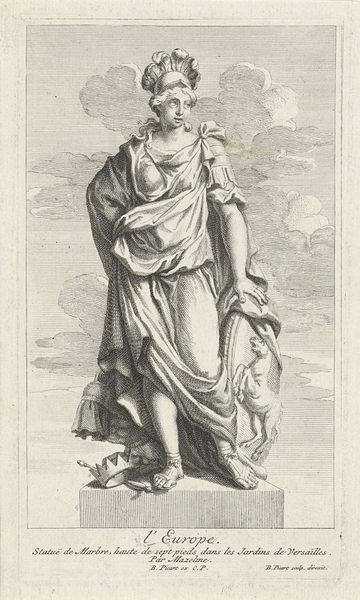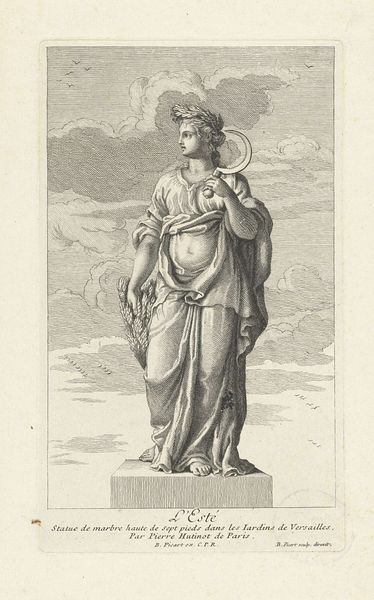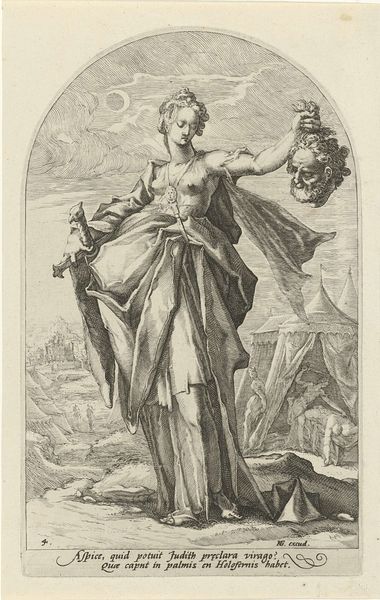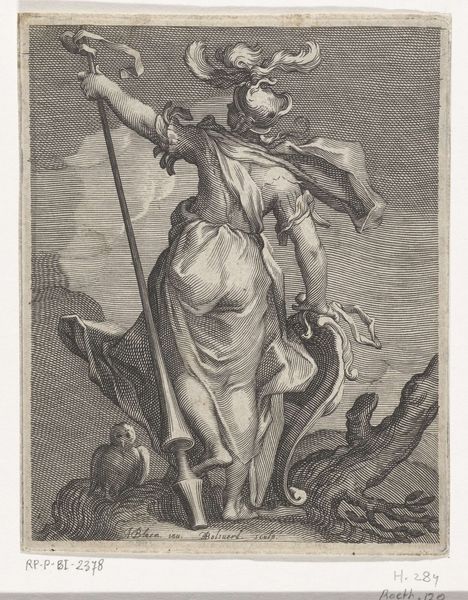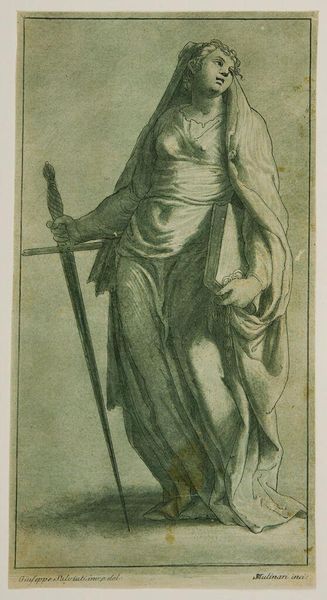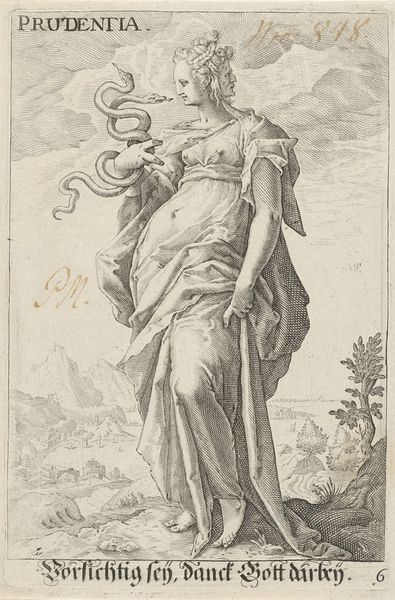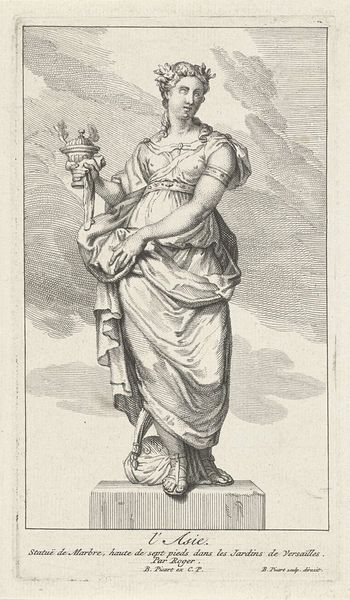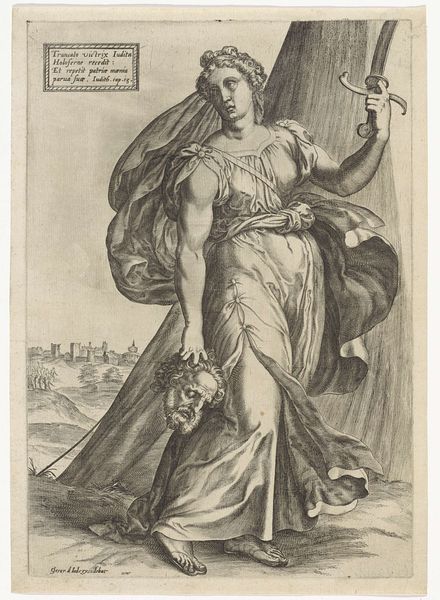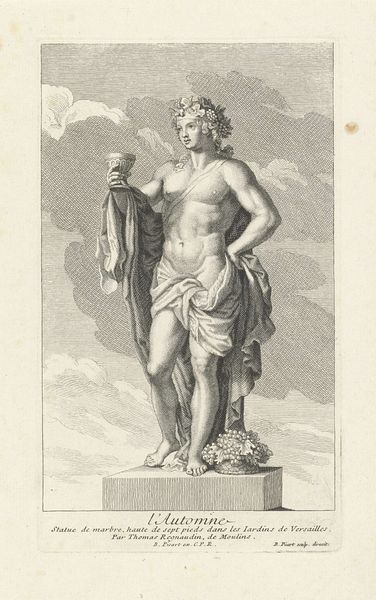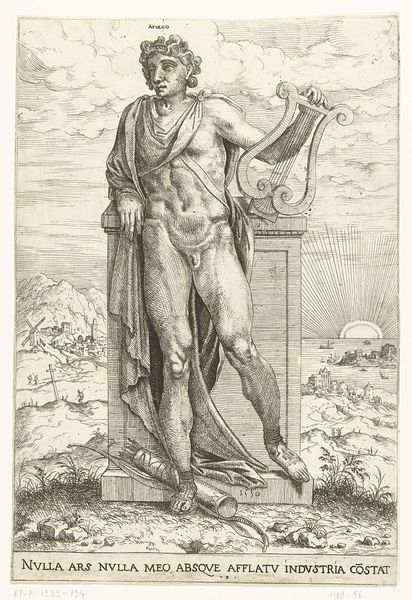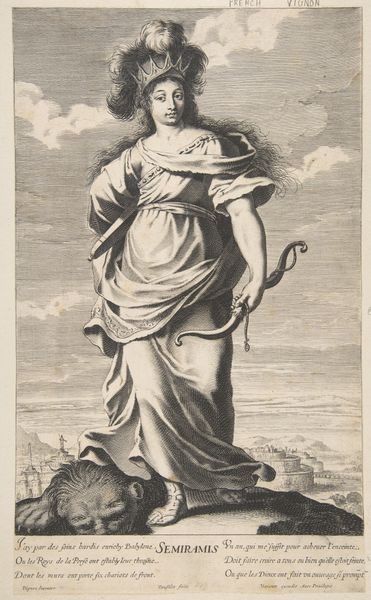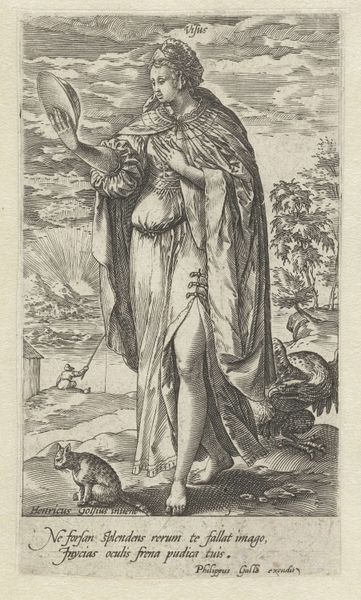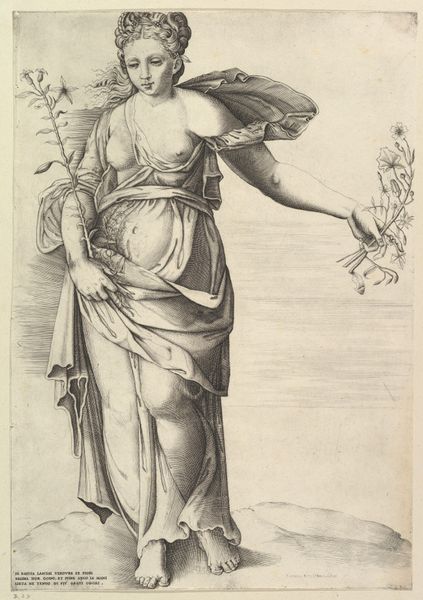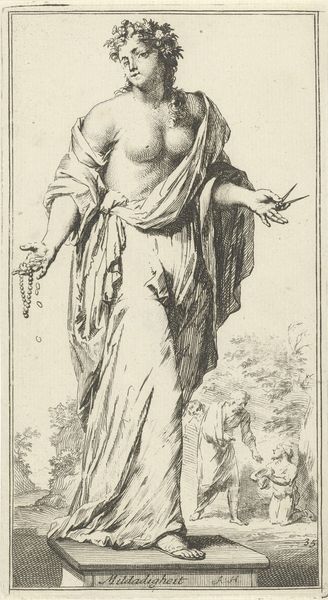
engraving
portrait
allegory
baroque
classical-realism
figuration
history-painting
engraving
Dimensions: height 180 mm, width 105 mm
Copyright: Rijks Museum: Open Domain
Curator: This is "Afrika," an engraving from 1709 by Louis Surugue, currently held in the Rijksmuseum. It's part of a larger series depicting continents. What strikes you immediately about this piece? Editor: The starkness of the engraving—its emphasis on line—reminds me of maps. It feels both representational and symbolic in its material limitations. Curator: Indeed, that's fitting given its allegorical function. Consider how the female figure, the embodiment of Africa, is positioned in relation to the lion. The lion can represent untamed wildness and nature. Also note her dress; it is in classical style, which underscores the influence of Western European artistic values during a colonial era. How might we reconcile that image of Africa today? Editor: The contrast between the supposed "untamed" Africa and the classically draped figure speaks volumes about colonial aesthetics, which are about dominating materials, about imposing an alien sensibility. The work, as an engraving, would be relatively easy to reproduce at scale and deploy across empire. Curator: The act of representation is a social project as well. There's an undeniably Orientalist lens here that flattens a vast and diverse continent into a single, stereotyped entity, and even renders it feminine, ready for appropriation. That bow she's holding— is it a threat or a gift? Who is this weapon ultimately meant to serve? Editor: The bow intrigues me too. Its materiality speaks to its function, to its design and the resources and labor required. The question then, is about whose labor went into that bow, both artistically and practically? The same question applies to this print, made accessible as it was through the labor of many, from the papermakers to the printmakers. Curator: Surugue's "Afrika" invites us to confront the fraught relationship between artistic representation, colonial ideology, and enduring stereotypes. Editor: And to recognize how simple tools of material production like the engraving can serve to disseminate political ideas in ways that shape understandings and misunderstandings.
Comments
No comments
Be the first to comment and join the conversation on the ultimate creative platform.
